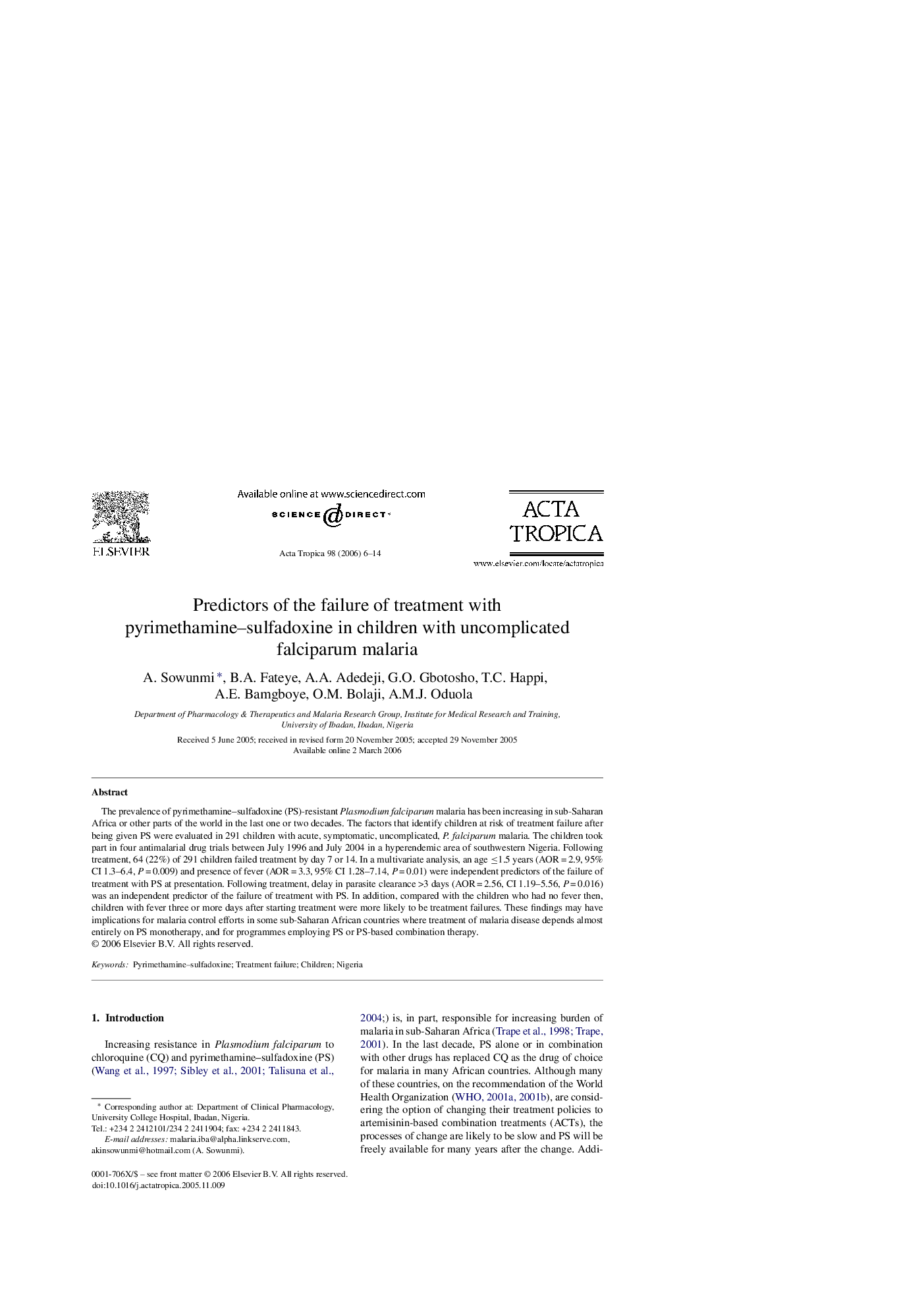| Article ID | Journal | Published Year | Pages | File Type |
|---|---|---|---|---|
| 3394731 | Acta Tropica | 2006 | 9 Pages |
Abstract
The prevalence of pyrimethamine-sulfadoxine (PS)-resistant Plasmodium falciparum malaria has been increasing in sub-Saharan Africa or other parts of the world in the last one or two decades. The factors that identify children at risk of treatment failure after being given PS were evaluated in 291 children with acute, symptomatic, uncomplicated, P. falciparum malaria. The children took part in four antimalarial drug trials between July 1996 and July 2004 in a hyperendemic area of southwestern Nigeria. Following treatment, 64 (22%) of 291 children failed treatment by day 7 or 14. In a multivariate analysis, an age â¤1.5 years (AOR = 2.9, 95% CI 1.3-6.4, P = 0.009) and presence of fever (AOR = 3.3, 95% CI 1.28-7.14, P = 0.01) were independent predictors of the failure of treatment with PS at presentation. Following treatment, delay in parasite clearance >3 days (AOR = 2.56, CI 1.19-5.56, P = 0.016) was an independent predictor of the failure of treatment with PS. In addition, compared with the children who had no fever then, children with fever three or more days after starting treatment were more likely to be treatment failures. These findings may have implications for malaria control efforts in some sub-Saharan African countries where treatment of malaria disease depends almost entirely on PS monotherapy, and for programmes employing PS or PS-based combination therapy.
Keywords
Related Topics
Life Sciences
Immunology and Microbiology
Parasitology
Authors
A. Sowunmi, B.A. Fateye, A.A. Adedeji, G.O. Gbotosho, T.C. Happi, A.E. Bamgboye, O.M. Bolaji, A.M.J. Oduola,
